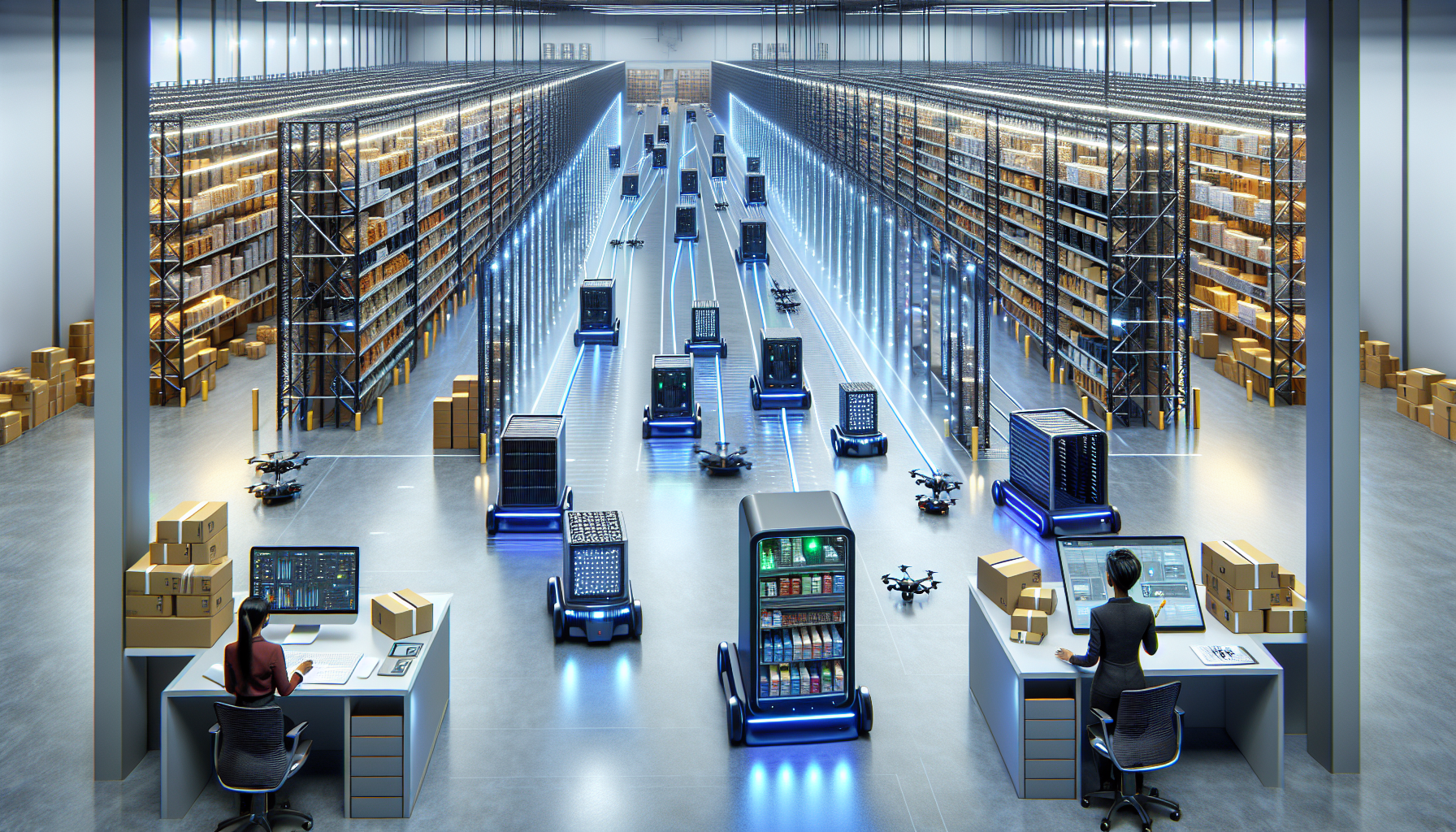Warehouse innovation plays a crucial role in optimizing operations and improving efficiency in modern supply chains. One of the key technologies that has revolutionized warehouse optimization is Automated Guided Vehicles (AGVs). AGVs are autonomous vehicles that are designed to move materials and goods within a warehouse or distribution center without human intervention. With their ability to handle repetitive and monotonous tasks, AGVs are transforming the way warehouses operate.
The Benefits of AGVs in Warehouse Optimization
AGVs offer a wide range of benefits that contribute to the overall enhancement of warehouse operations. Some of the key benefits of using AGVs include:
- Increased Efficiency: AGVs are programmed to follow optimized routes and can navigate crowded warehouse environments efficiently. They can be used to transport goods from one location to another, eliminating the need for manual material handling and reducing the risk of errors or delays.
- Improved Safety: With AGVs taking over repetitive and potentially hazardous tasks, the risk of accidents and injuries is significantly reduced. AGVs are equipped with advanced safety features such as collision avoidance systems and sensors to ensure a safe working environment.
- Enhanced Productivity: By automating material movement, AGVs free up valuable human resources to focus on more complex tasks that require critical thinking and problem-solving skills. This leads to increased productivity and allows employees to allocate their time and energy to more value-added activities.
- Optimized Space Utilization: AGVs are designed to operate in tight spaces and can maneuver in narrow aisles, maximizing the utilization of warehouse space. This can help warehouses accommodate more inventory and improve overall storage capacity.
AGVs are highly versatile machines that can be customized to meet the specific needs of different warehouse operations. They can be programmed to handle various tasks, such as picking and placing items, transporting goods between different areas, and even loading and unloading trucks. The flexibility of AGVs allows warehouses to adapt to changing demands and optimize their operations accordingly.
AGV Deployment Strategies
When it comes to deploying AGVs in a warehouse, careful planning and consideration are crucial. Here are some key factors to consider for successful AGV deployment:
- Warehouse Layout: Analyzing the warehouse layout and identifying the areas where AGVs can have the most significant impact is the first step. AGVs are best suited for tasks that involve repetitive movements and predictable routes, such as transportation between picking stations and staging areas.
- Connectivity: AGVs rely on a network of sensors and communication systems to navigate and interact with their environment. Ensuring a robust connectivity infrastructure is in place is essential for seamless AGV operations.
- Integration with Warehouse Management Systems: AGVs should be integrated with the warehouse management system (WMS) to enable real-time communication and coordination. This integration allows for tasks to be assigned to AGVs automatically, optimizing their routes and ensuring synchronization with other warehouse activities.
- Training and Support: Proper training and support are critical for successful AGV deployment. Employees should be trained on how to interact and work alongside AGVs to maximize their benefits and ensure a smooth transition.
HCO Innovations, a prominent provider of warehouse optimization solutions, specializes in assisting companies in deploying AGVs and optimizing their warehouse operations. They offer comprehensive consulting services to help businesses assess their needs, design AGV deployment strategies, and provide ongoing support to ensure smooth integration.
The Future of AGVs in Warehouse Innovation
The use of AGVs in warehouse innovation is expected to continue to grow in the coming years. Advancements in technology, such as the integration of artificial intelligence and machine learning, will further enhance the capabilities of AGVs and enable them to perform more complex tasks. For example, AGVs with computer vision capabilities can identify and classify objects, making them capable of sorting and arranging items in a warehouse.
Furthermore, the rise of Industry 4.0 and the Internet of Things (IoT) is driving the development of smart warehouses, where AGVs can communicate and collaborate with other machines and systems in real-time. This level of connectivity and cooperation will enable warehouses to operate with even greater efficiency and accuracy.
In conclusion, AGVs play a crucial role in enhancing warehouse innovation. Their ability to increase efficiency, improve safety, enhance productivity, and optimize space utilization make them an indispensable tool for modern warehouses. With the right deployment strategies and support from experts like HCO Innovations, companies can unlock the full potential of AGVs and transform their warehouse operations to meet the demands of the ever-evolving supply chain landscape.

